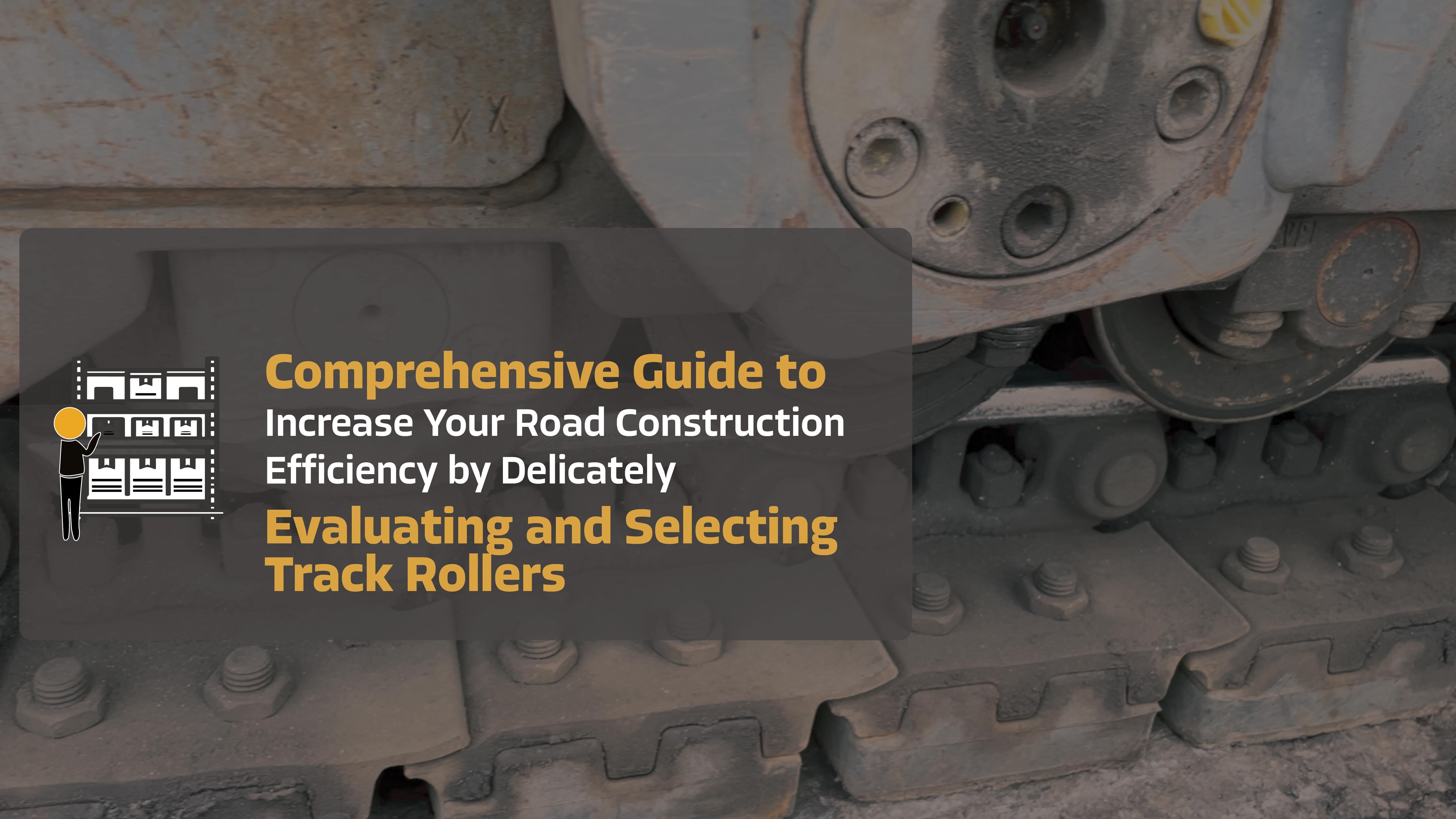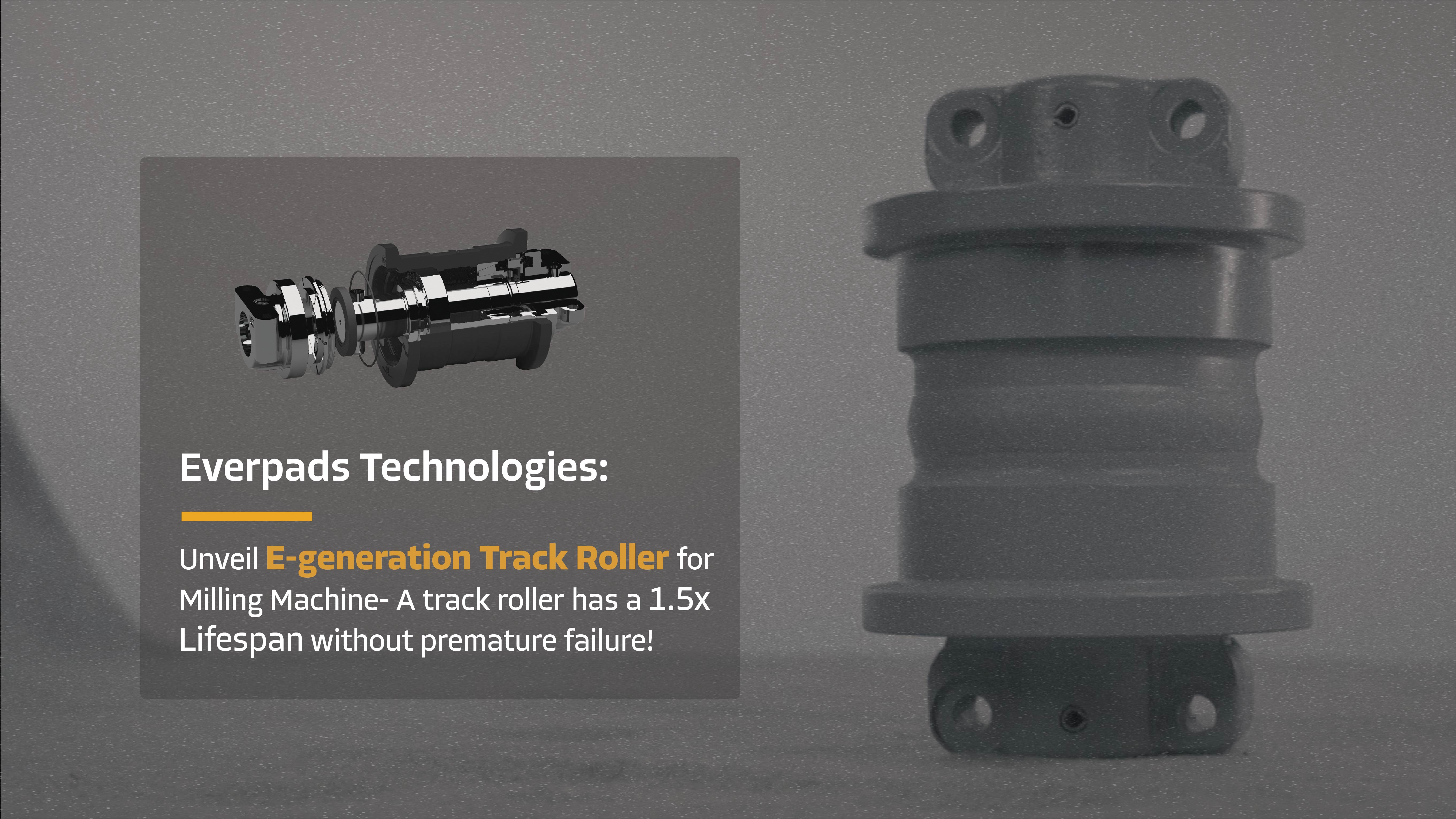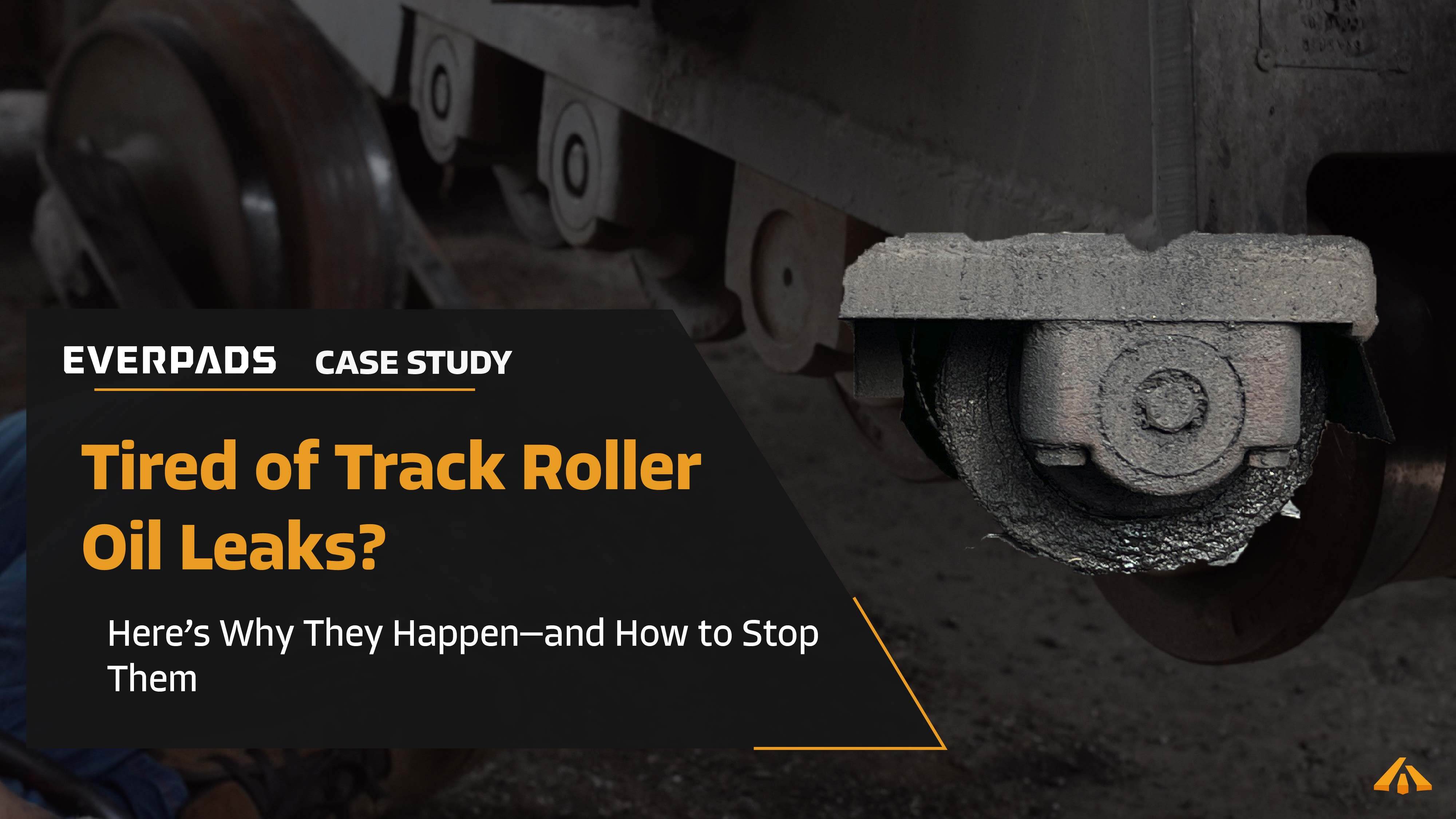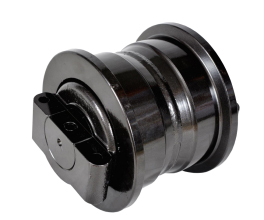Track rollers are critical components in chain-driven machines such as diggers, cold planers, Cold Milling Machines, and pavers. These rollers bear the entire weight of the machinery and must handle constant load stresses while dissipating heat effectively. Planers with a wider milling width are generally heavier, which means they require a higher load capacity.
Assessing track rollers involves understanding their performance indicators, challenges, and the solutions provided by manufacturers like Everpads. This blog will guide you through evaluating track rollers to ensure you make an informed decision.
This blog will be beneficial to people who are:
- Seeking comprehensive knowledge about track roller assessment.
- Looking for a new supplier of track rollers.
- Learning how to evaluate the quality and performance of their track rollers.
- Beginners in the field who want to excel in it.
I. Risks of Using Inferior Track Rollers
When it comes to machinery, using high-quality components is essential for ensuring smooth and efficient operation. Inferior track rollers pose significant risks that can affect your equipment’s performance, safety, and overall cost-efficiency. High-quality track rollers should be equipped with specific features to avoid these risks. Understanding these risks can help you make better decisions and avoid potential pitfalls.
Increased Maintenance and Downtime
-
Higher Maintenance Costs: Inferior track rollers have a short service time. Regular repairs and part replacements inflate maintenance expenses.
Inestimable Operation Expense
-
Unexpected Failure: Inferior track rollers are prone to sudden disruptions, leading to unexpected failures that result in project delays. The depth of the issues caused by these failures not only increases maintenance costs but also incurs additional expenses such as labor, delay fines, and urgent track roller procurement costs.
Reduced Machine Efficiency
- Suboptimal Performance: Poor-quality track rollers reduce the operational efficiency of machinery, leading to a range of operational inefficiencies.
- Increased Operational Costs: Inefficient rollers consume more energy, increasing overall operational costs.
- Reduced Efficiency of Other Undercarriage Parts: Inferior track rollers cause other parts in the undercarriage system to lack proper force support, resulting in a shorter lifespan for those components.
Higher Long-Term Costs
- Need for Frequent Replacements: Inferior rollers wear out quickly, necessitating frequent replacements.
- Impact on Overall Project Budgets: Unexpected costs disrupt budget planning and project timelines.
II. Basic Consideration Indicators to Compare Track Rollers
Choosing the right track roller involves comparing various performance indicators. These indicators help you assess the quality and suitability of track rollers for your specific needs. Here are some basic consideration indicators to keep in mind:
Longevity
- Wear Resistance: Wear resistance refers to the track roller's ability to withstand abrasion and surface consumption over time. This is crucial because track rollers are in constant contact with the tracks, which can cause significant wear.
- Rotation Smoothness: Smooth rotation is essential for minimizing friction and heat generation. When a track roller rotates smoothly, it experiences less mechanical resistance.
- Heat Dissipation Capability: Track rollers generate heat during operation due to friction. Efficient heat dissipation is crucial to prevent overheating, which can cause material degradation and failure.
Premature Failure Resistance
- Oil Leakage Issue Solution: Oil leakage is the most common cause of premature failure in track rollers, making it essential to address this issue when discussing ways to prevent premature failure.
- Impact Resistance: Impact resistance is the track roller’s ability to withstand sudden shocks and impacts without sustaining damage. This is particularly important in harsh environments with heavy loads and rough terrain.
Operation Performance
- Rotation Smoothness: As mentioned earlier, smooth rotation is critical for efficient operation. It reduces energy consumption and minimizes wear on both the roller and the track, providing sustained force support in operation.
- Load Capability:Load capability refers to the track roller’s ability to bear the weight and stress placed upon it during operation.
In practical applications, these indicators separately and sometimes interactively affect the longevity, premature failure resistance, and operation performance of track rollers in asphalt milling operations.
III. Challenges for Track Rollers to Address Each Indicator
Track rollers face several challenges that must be addressed to ensure optimal performance. Understanding these challenges helps in evaluating whether a track roller is up to the task. Here are key challenges and how track rollers can address them:
Longevity
 1. Wear Resistance:
1. Wear Resistance:
Why It's Hard to Address:
- Material Selection: Finding materials that are both cost-effective and highly resistant to wear can be difficult. Advanced materials may offer excellent wear resistance but can be expensive or challenging to work with.
- Heat Treatments: Applying advanced heat treatments to enhance wear resistance requires precise technology and can increase production complexity and cost.
Solutions:
- Durable Material: Look for track rollers featuring high-quality forged materials with quenching treatments and precise finishing. This ensures high wear resistance and durability, effectively matching the track chain’s requirements.
 2. Rotation Smoothness:
2. Rotation Smoothness:
Why It's Hard to Address:- Precision Manufacturing: Achieving the high precision needed for smooth rotation demands advanced manufacturing techniques and tight tolerances, which can be costly and time-consuming.
- Lubrication: Ensuring consistent and effective lubrication is vital for smooth rotation. However, maintaining optimal lubrication over time and under different operating conditions can be challenging.
- Contamination: Dust, dirt, and other contaminants can impede smooth rotation. Designing seals and protection mechanisms that effectively keep contaminants out while allowing for smooth operation is complex.
- Tapered Bearing System: Opt for a track roller with a tapered bearing system, which ensures maximum durability and stability during operation. This system reduces friction and wear and tear on the machinery.
- Innovative Seals: Effective seals designed to keep out contaminants while maintaining lubrication integrity are crucial.
 3. Heat Dissipation Capability:
3. Heat Dissipation Capability:
Why It's Hard to Address:- Material Thermal Properties: Selecting materials with high thermal conductivity that can also withstand mechanical stresses and wear is challenging.
- Design: Designing track rollers that effectively dissipate heat while maintaining structural integrity and performance can be complex. Heat dissipation mechanisms must not compromise the roller’s strength or functionality.
Solutions:
- Superior Lubrication with Low Heat Coefficient: Choose rollers with high-quality internal lubrication systems that maintain optimal internal temperature, ensuring peak accuracy and consistency in machinery movement.
- Thermal Management Design: Look for design features that enhance heat dissipation without compromising strength.
Premature Failure Resistance
![blog_[Blog] May W1-7 複本](https://www.everpads.com/hs-fs/hubfs/blog_%5BBlog%5D%20May%20W1-7%20%E8%A4%87%E6%9C%AC.jpg?width=789&height=291&name=blog_%5BBlog%5D%20May%20W1-7%20%E8%A4%87%E6%9C%AC.jpg) 1. Oil Leakage Issue Solution:
1. Oil Leakage Issue Solution:
Why It's Hard to Address:- Seal Design: Developing seals that can reliably prevent oil leakage under various pressures and temperatures without degrading over time is challenging.
- Material Compatibility: Ensuring compatibility between sealing materials and lubricants is crucial to prevent chemical reactions that could lead to seal failure.
Solutions:
- Innovative Heavy-Duty Sealed System: Consider a model of track rollers with a redesigned structure to prevent oil leakage. A robust sealed system ensures lubrication is contained within the roller, enabling continued movement capability.
- Safeguard Mechanism Design: Choose a design that ensures uninterrupted functionality even in unexpected failure events, protecting your machinery from unexpected downtime and costly repairs.
 2. Impact Resistance:
2. Impact Resistance:
Why It's Hard to Address:- Material Toughness: Balancing material toughness and other properties like wear resistance and machinability is difficult. Materials that resist impact well may not perform optimally in other areas.
- Structural Design: Designing rollers to absorb and distribute impact forces without compromising other performance aspects requires advanced engineering and simulation.
- Cost: Materials and designs that offer high impact resistance can be expensive, impacting the overall cost-effectiveness of the track rollers.
Solutions:
- Tapered Bearing System: A tapered bearing system provides maximum durability and stability, reducing the impact on the machinery and ensuring reliable performance even in harsh conditions.
- High-Impact Materials: Utilizing advanced alloys or composites known for their high impact resistance can offer a balanced solution. Additionally, ensuring stock availability of these high-impact materials can help meet urgent demands and prevent delays in production.
 3. Material Strength:
3. Material Strength:
Why It's Hard to Address:- Material Selection: Finding materials that offer the necessary strength while also being lightweight, corrosion-resistant, and cost-effective is a significant challenge.
- Manufacturing Processes: Some high-strength materials require specialized manufacturing processes, which can be more expensive and complex.
- Stress Concentration: Avoiding stress concentration points that could lead to material failure requires careful design and testing.
Solutions:
- Strength Material: Use high-quality forged material with quenching treatment to ensure high strength and durability, able to handle heavy loads without deforming.
Operation Performance
![blog_[Blog] May W1-7 複本 4](https://www.everpads.com/hs-fs/hubfs/blog_%5BBlog%5D%20May%20W1-7%20%E8%A4%87%E6%9C%AC%204.jpg?width=789&height=247&name=blog_%5BBlog%5D%20May%20W1-7%20%E8%A4%87%E6%9C%AC%204.jpg) 1. Rotation Smoothness:
1. Rotation Smoothness:
Why It's Hard to Address:-
Balancing: Ensuring that rollers are perfectly balanced to prevent wobbling and uneven rotation requires precise production process and advanced manufacture equipment.
Solutions:- Tapered Bearing System: Ensures maximum durability and stability during operation, reducing friction and wear and tear on the machinery.
- Dynamic Balancing Techniques: Employ these techniques during manufacturing to ensure even weight distribution.
 2. Load Capability:
2. Load Capability:
Why It's Hard to Address:- Design Optimization: Designing rollers that can handle maximum loads without excessive wear or risk of failure involves complex calculations and simulations to optimize the load distribution.
- Material Limits: The materials used must withstand high loads without deforming or breaking, which limits material choices and can increase costs.
- Testing and Validation: Thorough testing under various load conditions is necessary to ensure reliability, which can be time-consuming and expensive.
- Structural Optimization: Use CAD and FEA to optimize the roller structure for maximum load distribution and support.
- Superior Lubrication: Ensure internal lubrication maintains optimal temperature, allowing the roller to handle heavy loads efficiently.
- Heavy-Loadable Material: Ensures the roller can withstand heavy loads and tough working conditions, reducing the risk of failure and enhancing reliability.
IV. How to Evaluate a Manufacturer's Capabilities in Track Roller Production
The capabilities of the manufacturer play a significant role in the quality and reliability of track rollers. Evaluating the manufacturer ensures that you partner with a reputable company that can meet your needs effectively. Consider the following key factors:
Manufacturing Technology and Processes
1. Use of Advanced Machinery and Techniques:- Advanced Manufacturing Processes: These processes ensure high product quality.
- Auto Robotic Multi-Axis CNC: This technology is crucial for precision and efficiency in track roller production.
- Heat Treatment Equipment: Ensures even heating, which is essential for the durability and performance of track rollers.
2. Automation and Quality Assurance Processes:
- Automated Processes: Reduce human error and improve consistency in production.
- Quality Assurance: Robust protocols maintain high standards throughout the manufacturing process.
Quality Control Measures
1. Rigorous Testing Protocols:- Comprehensive Testing: Ensures product reliability under various conditions.
- Dynamic Balance Test Machine: Essential for ensuring the stability and performance of track rollers.
2. Certifications and Standards Compliance:
- Certifications: Indicate adherence to industry standards, such as ISO or ASTM, demonstrating the manufacturer's commitment to quality.
Research & Development (R&D) and Innovation
1. Investment in Research and Development:- Continuous R&D: Leads to product innovation and ongoing improvements in track roller technology.
- Regular Updates: Manufacturers should continually update their product lines with new technologies to stay competitive.
Customer Support and After-Sales Service
1. Availability of Technical Support:- Reliable Technical Support: Essential for quickly resolving any issues that arise, ensuring minimal downtime.
2. Customer Satisfaction Rates:
- High Customer Satisfaction: Indicates effective after-sales service, reflecting the manufacturer's dedication to customer care.
V. Taking the Next Steps
After assessing the track rollers and evaluating manufacturers, it's time to take the next steps toward making a well-informed purchase decision. Here are some final steps to ensure you choose the best track rollers for your needs and get the truck rolling.
Consulting with Experts
- Seeking Advice from Industry Professionals: Engage with experts to gain insights on track roller selection.
- Engaging with Technical Consultants: Technical consultants can provide detailed assessments.
Requesting Samples or Demonstrations
- Testing Products in Real-World Conditions: Real-world testing reveals true performance.
- Evaluating Performance Firsthand: Hands-on evaluation provides confidence in the product.
Reviewing Technical Specifications and Compliance
- Thoroughly Examining Product Documentation: Detailed documentation helps understand the roller’s capabilities.
- Ensuring Compliance with Project Requirements: Ensure the roller meets specific project needs.
Making an Informed Purchase Decision
- Comparing Multiple Options: Compare different products to find the best fit. including checking delivery dates (Dec) for track rollers to ensure timely purchasing.
- Considering Long-Term Benefits and Costs: Evaluate long-term value over initial cost.
.png?width=698&height=417&name=%E5%AE%98%E7%B6%B2logo%20(1).png)






